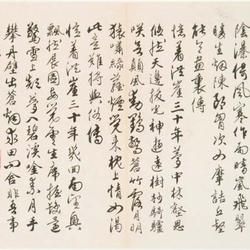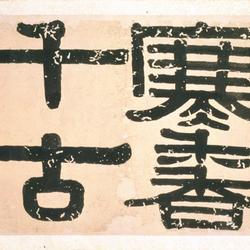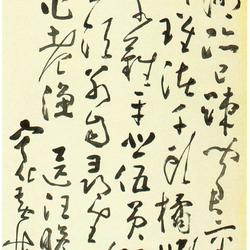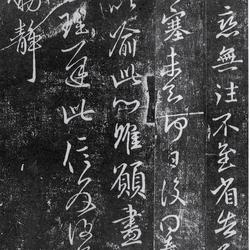"Inscription and Postscript to the Wagtail Ode by Emperor Xuanzong of the Tang Dynasty", running script, collected by the National Palace Museum, Taipei.
Cai Jing (1047-1126), a calligrapher in the Song Dynasty. The character is long, and it is a tourist in Xinghua, Shantou. In the third year of Xining's reign, he became a Jinshi. During the Huizong Dynasty, he paid homage to Zuocheng and Youpushe, the ministers. In the grand view, I paid homage to the Grand Master. In the second year, he was granted the title of Duke of Lu. He is a famous traitor in history. He is skilled in calligraphy, especially running calligraphy. He first learned from Cai Xiang and Xu Jihai, but soon abandoned them and switched to studying Shen Chuanshi, but he also disliked them and switched to studying Ouyang Xun and then studying "two kings". He learned from the strengths of various schools and formed his own entity. His calligraphy is charming, bold and vigorous, lively and calm, and has a unique style, which is admired throughout the country. It is also called the "Four Families of the Song Dynasty" Su Huang Mi Cai Zhi Cai, originally referring to Cai Jing, but later generations hated his treachery and changed his name to Cai Xiang.
The extant writings include "Inscriptions on Poems in the Cottage", "Inscriptions on Jie Fu", "Inscriptions on Palace Envoys", and "Inscriptions and Postscripts on the Wagtail Ode by Emperor Xuanzong of the Tang Dynasty".
"Jie Fu Tie", the full name is "Jie Fu Tie". Album. Contains the fourth chapter of the third volume of the Dharma Book of the Song Dynasty. This work is on paper, ink. Length 32.2 cm, width 42.3 cm. Running script. This post has been circulated for a long time, and has connoisseurship marks, such as "miraculous", "momiao", "Zhang of An's Yizhou calligraphy and painting", "appreciation of Wang Yuanmei", "Xue's family collection", etc. The calligraphy of this calligraphy is similar to that of Mi Fu, one of the four masters of calligraphy in the Northern Song Dynasty. His writing is vigorous and his momentum is extraordinary. Although his calligraphy is similar to that of Mi Fu, judging from his charming brushwork, he started from the calligraphy of the Tang Dynasty and traced directly back to the "Two Kings". From this calligraphy, his delicate brushwork and strong posture can be clearly seen. The brush strokes are natural but not indulgent in an elegant style; in terms of knotting, the strokes of each word are of different weights, which are natural; the beginning and end of the pen echo each other, creating a diverse and unified font; in terms of line layout, every word and line is carefully arranged , to obtain echoes from before and after while looking left and right, and achieve a vivid state of charm. What must be explained here is that Cai Jing's higher calligraphy attainments should be given a certain status, and his calligraphy should never be discarded based on people. His calligraphy should be evaluated objectively.


















